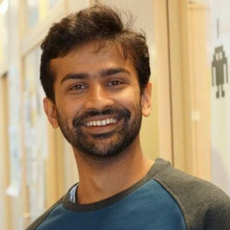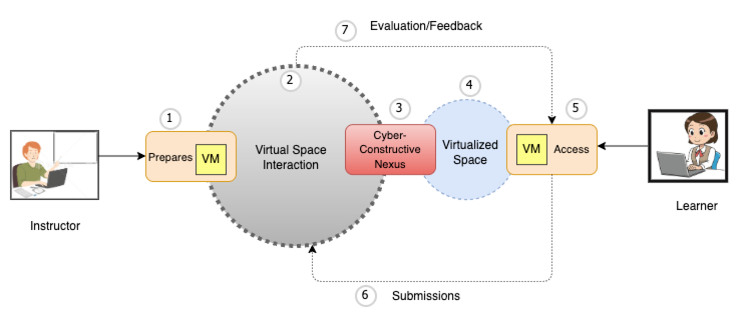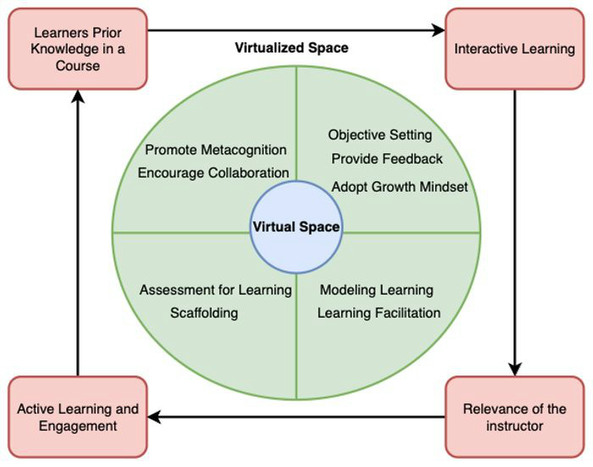Fostering active learning
Best Practice 2023
Constructivism in second life: Fostering active learning through teacher - assisted virtualized virtual environments


Presenters: Nurul Momen & Victor R. Kebande
Department of Computer Science, DIDA
1. Virtualized Active Learning
In contemporary education, there is a pressing need to enhance active learning, student engagement, and knowledge construction. Educators grapple with the task of crafting dynamic learning settings that not only motivate learners to actively build their understanding but also furnish them with hands-on experiences crucial for acquiring knowledge. This challenge becomes particularly pronounced in the area of cybersecurity education. How can educators adeptly apply constructivist principles in cybersecurity education to nurture active learning and engagement, all within the immersive ecosystem of Virtualized Virtual Learning Environments? This inquiry seeks to address these crucial questions based on the sequences shown below.

2. Teacher’s Role in Virtual Constructivist Learning
In a virtualized virtual constructivist learning environment, the role of the teacher or instructor undergoes a significant transformation compared to traditional teaching approaches. Here are key aspects of the teacher’s role in fostering active learning and constructivism: Promote Meta-cognition: Teachers encourage metacognition, helping students become aware of their own learning processes. This includes reflecting on their learning strategies and making adjustments as needed.
- Assessment for Learning and Scaffolding: Assessments in a constructivist setting focus on understanding students’ thought processes, problem-solving abilities, and how they construct knowledge. Formative assessments, scaffolding support, adjusting the level of guidance as learners gain confidence and independence.
- Modeling and facilitating Learning: Teachers can model the process of active learning and critical thinking; demonstrating how to approach problems and engage with content. Consequently, the teacher becomes a facilitator of learning. Their role is to guide and support students as they actively construct their understanding of concepts.
- Objective setting and Feedback: While encouraging exploration, teachers provide clear learning objectives to guide students in their constructivist journey. Constructivist instructors offer constructive feedback that helps students reflect on their learning experiences and make improvements. Feedback focuses on the process of learning rather than just the final outcome.
- Adopt a growth Mindset: Instructors themselves adopt a growth mindset, believing that all students can develop their skills and knowledge through effort and persistence.

3. Outcome
Constructivism in Second Life represents a dynamic paradigm shift in education. By actively engaging students and promoting the construction of knowledge within virtualized virtual environments, we harness the full potential of modern pedagogical tools. Crucially, the teacher’s role emerges as a guiding force, shaping constructivist learning experiences that empower students to become active, self-directed learners. Together, educators and learners unlock the transformative power of constructivism in virtual education, paving the way for a brighter, more interactive future of learning.
4. Challenges
Challenges in implementing constructivism in virtual learning environments include technical hurdles, content design complexities, digital equity concerns, resource allocation dilemmas, and adapting assessment methods. Maintaining learner engagement, providing teacher training, addressing privacy and security issues, and evaluating effectiveness pose additional difficulties. Ensuring accessibility, overcoming resistance to change, and grappling with the shift in pedagogical approaches are essential considerations. Successfully navigating these challenges is crucial for harnessing the benefits of constructivist education in virtual environments.
Best Practice Poster: Constructivism in second life: Fostering active learning through teacher – assisted virtualized virtual environments